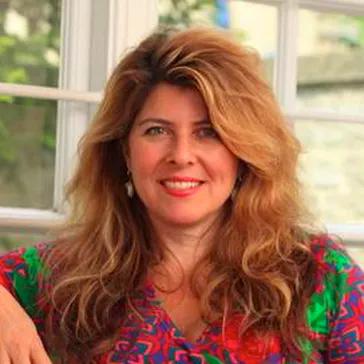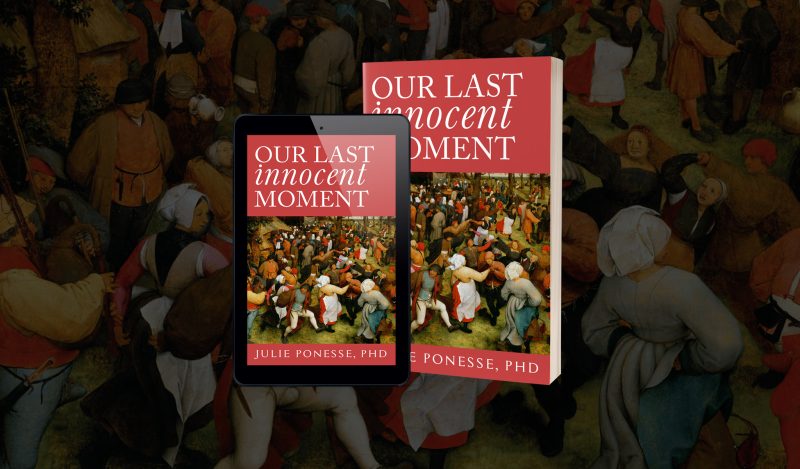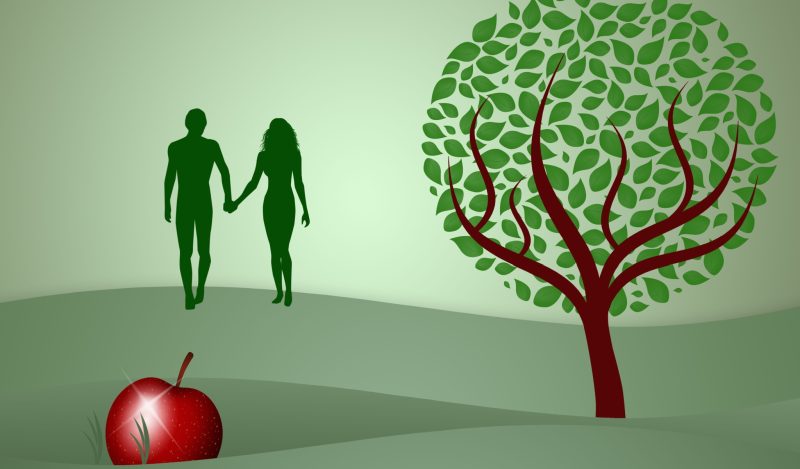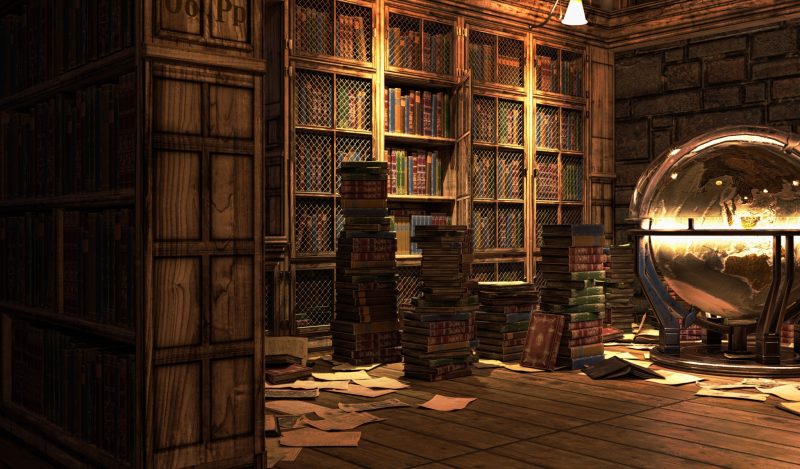I’m writing on the morning of my 61st birthday — a phrase that does not trip off the tongue, or emerge easily on the keyboard! I am the only one awake yet — Brian is still asleep, and Loki, his fluffy fur having grown back after his late-summer grooming, is snuggled again him, napping too.
We are staying in Brooklyn, in a beautiful neighborhood built up during 1900-1915, my favorite period of American urban architecture.
Here, the texture of the streetscape is mostly intact. Old trees still line sedate red-brick tenements and elegant, historically preserved townhomes.
The early 20th century was a time of wonderful whimsy in relation to urban development, and you can see the immense hope and imaginativeness in our country at that time, in the very architecture of many of our cities. All around us, in this neighborhood, you can still see apartment buildings with castle-like crenellations, and crazy coats of arms that are entirely invented, depicted in plaster ovals placed high along the rooflines; you can still see half-timber walls, a notion lifted straight from Elizabethan English architecture, while, at the same time, entire blocks look like Edwardian London’s Mayfair.
All of this wild architectural pastiche surrounds and adorns the businesses, churches and institutions of a Caribbean community that still seems culturally rich and intact; that feels, at least to me, as if, unlike Manhattan now, it has not been blown apart yet by overdevelopment, or crushed by the corporate interests that used the pandemic to destroy small businesses. For these reasons and many others (the food is sublime) it fills me with happiness to be here.
We are being propagandized to believe that human culture does not matter, but a rich, intact culture around us makes humans stronger, happier, more interesting, and better able to resist oppression.
There is a reason that Jane Jacobs’ classic 1961 book on urban civic health — The Death and Life of Great American Cities — has had such an impact on my thinking. She made the case that walkable cities, that are dense, that have public gathering-places, that allow “eyes on the street” (the eyes of caring neighbors, not of the State), and that mix residential and retail buildings, create a culture of neighborliness and civic engagement, and thus support and sustain robust, healthy, vibrant civic societies.
I come back to Brooklyn upon leaving Manhattan, where I used to live, these days feeling a sense of relief. The overdevelopment in Manhattan – that seems to have all unrolled during the “lockdowns,” when people could not gather to discuss and resist the rezoning plans prepared, in the blackout of gathering, for their neighborhoods — now makes giant swaths of Manhattan look exactly like Dallas. This overdevelopment, with its massive, ugly, featureless glass towers, has clearly changed how Manhattanites relate to one another. I no longer see the intense energy of chatting, or the unexpected, wacky exchanges, that used to characterize life on the sidewalks in that city.
For one thing, Manhattan’s real estate profile has changed so dramatically during “lockdowns” that it is a city almost entirely of rich people now, whereas until 2020 it was still a city of incredible economic and racial diversity. So that energy that Manhattan used to have until “lockdowns,” and the stealth redevelopment that clearly was part of the “lockdown” agenda — of people with greatly different life experiences and perspectives interacting and jostling against one another productively — is evaporated.
For another, the glass-and-steel megaliths that disorient the visitor along the entire midtown stretch of Hudson Yards, or that replace what used to be miles of charming, raffish waterfront buildings — tiny hand-wrought townhouses, and warehouses that dated to Walt Whitman’s wanderings along the same stretch of real estate — do not lend themselves any longer to crowds gathering peacefully, enjoying a varying cityscape (because it no longer varies), or wandering, chatting, or engaging with one another.
Indeed, the very profile of the city is unrecognizable. This profile, as seen from Queens or from New Jersey, as you approach — a profile that used to be so uplifting and rhythmic and poetic, and that inspired so many songs and poems: the visual dance from the Brooklyn Bridge to the Seaport, to Murray Hill and what used to be called Hell’s Kitchen (now rebranded “Hudson Yards”), to the pinnacles of the Empire State Building and the Chrysler Building, to the skyscrapers of Midtown to the towers along Central Park and the East Side, and the elegant diminuendo of old-school Harlem — this rhythm, this famous cityscape, has been essentially respected for decades, even with new development.
In the recent past, no matter what happened, you never entirely lost the feel of the landscape under these various undulating landmarks. A view of Manhattan from New Jersey in 2018 had the pentimento beneath it of the same view as it was when seen from a boat arriving into harbor in black and white images from 1940.
But now you can’t even see that elegant visual rhythm any longer, whether you arrive from the New Jersey side or from Queens. Indeed, as you approach Manhattan now, you can barely tell where you are. Downtown Hong Kong? Downtown Shanghai? Downtown Albany? (The same globalist destruction of landscape and urban features has taken place in London and elsewhere in Europe, but that is another essay).
The change in architecture has changed the culture, for the worse. Manhattan now is an alienating, fancy shopping mall, for mile upon mile, surmounted by sleek, unmemorable tower blocks no different from those that deface any Midwestern US, or global, downtown. It is now a place of wealthy anonymity.
Paradoxically, as a result, it is a city that is easier to control, propagandize, or to destroy.
It is easier now to turn a city like Manhattan into a “15-minute city” or a “smart city,” or to cordon it off — as I witnessed a few days ago when every entrance into the city from the FDR Drive was closed off for miles (the Marathon, but that could be done again at any time for less benign purposes) – than it would have been in the recent past, when Manhattan was rich with low-rise neighborhoods, brownstones, and tenements, with a mix of incomes, and with crowds on the street talking to one another, exchanging information, and resisting the plans of the elite, as the citizens of Manhattan successfully resisted certain plans, in the past, for decades.
As I write, protests have been deployed in our major cities in the West. This too is a planned strategy to destroy the freedoms and unity of our Western cities.
Brian O’Shea has recently pointed out a major finding of his, with important primary sourcing: that there are digital platforms, which may be indirectly funded by Soros- and CCP- backed entities, where anyone, including foreign actors, can coordinate protests in the West remotely. His argument, “Anti-Israel Protests Are Being Organized with CRM-[Customer Relationship Management] Style Apps,” is that old CRM software platforms are now repurposed so as rapidly to deploy protesters en masse anywhere in the world by anyone, for strategic purposes.
BLM, check. (Destroy the cities). Defund the Police, check. (Destroy the cities). Abortion rights, check (divide society). Now Israel/Palestine, check. (Divide society, strip us of civil liberties).
It is worth noting, I’d add, that under the guise of these protests, which can now be manifested digitally at the press of a button, Western liberties and symbols of Western and national history are being targeted. The Cenotaph in London, which honors the British war dead. Grand Central Station, the beating heart of free assembly in Manhattan. Capitalism itself — BlackRock was targeted. I am not a fan of BlackRock; but it is notable that the often-violent mass protests, nominally about violence in Gaza (as in the past about other issues), have somehow identified as targets some of the key symbols and institutions of Western history and its economic organization — symbols and institutions that do not organically relate to the conflict in the Middle East.
That is not an accident, I would argue. All of this points to a larger globalist pretext, for which Brian’s discovery is invaluable. We are all being manipulated, and tribal hatreds are the mechanism.
I am not saying that many of the people attending these marches — on whatever “side” — are not sincere believers. I am saying, as I often do, that there is also a larger agenda exploiting hatred and tribalism on both “sides,” and that the greater target is, as it has been for a few years now, the free civil societies, and the histories, of the West.
So what do we do? Understand what is happening, and not give in to it. Cling to our histories, our cultures, our heritages. There is nothing racist about that, if we do not define being “American” or “Dutch” or “French” racially. It is okay to love our countries, love our cities, love our cultures and subcultures; to demand to shape them, to insist on sustainable borders around them, to demand to protect them.
It is okay to champion the history represented by the Cenotaph in London. To refuse to allow mobs to shut down free assembly at Grand Central Station. To recognize that the plan is to create so much violence and civic instability that there can be a justification for crackdowns on our last liberties — that people beg for the “safety” represented by “smart cities,” 15 -minute quadrants, and now, as rolled out in Europe, digital identities.
We must also cherish and defend our civil liberties, and not fall into the traps laid out for us regarding freedoms of speech. Her colleagues censuring Rep Rashida Tlaib (D-MI), for instance, for publicly defending the use of the phrase “From the river to the sea [Palestine will be free]” is an act aligned with the First Amendment. But ousting her from Congress, much as you may oppose her words, unless you can make the case that this is a direct call for violence, which is already illegal under First Amendment laws, is not. Penalizing her for what Rep Rich McCormick (R-GA) calls “promoting false narratives,” definitely is not. Indeed, laws that have passed at the state level, that punish contractors for expressing views critical of the State of Israel, or for their engaging in boycotts against Israel, are also not aligned with our First Amendment.
Paying attention too these distinctions, and not getting swept away in an orgy of censoriousness and censorship, really matters right now.
Making sure that students are not actually threatening one another with shootings and stabbings, as students have been threatened at Cornell, is in alignment with academic freedom traditions. But ensuring that students lose job offers for peacefully expressing their views supportive of Palestine (or Israel for that matter), or silencing students on campus for views that make other students “feel uncomfortable,” is not in alignment with our free civil society traditions. These moves to suppress speech pose terrible threats to the future of freedom, and to our unity as a nation. Don’t fall for this trap.
Today, it’s Israel/Palestine that is the weaponized, hyped, violence-surrounded, and censored argument. Tomorrow, if you comply with these calls for weaponizing speech and for punishing students or citizens for their peaceful views, it will be your speech, or your young adult child’s, if you or he or she wish to comment on the current administration, or on election outcomes, or on any issue the globalists do not wish you or your kids to question or address.
So – back to loving our free cities, our vibrant neighborhoods, our Constitution. Back to recommitting, to engage in “being freedom” and “being peace” at the most local of levels.
That is the only way to survive and thrive and effectively to resist.
Today I am going to celebrate my birthday by going for a walk, and enjoying the intense chattiness of this part of Brooklyn; shopping for housewares at the dollar store; and taking loved ones and Loki for a walk in Prospect Park, before enjoying a homemade dinner (made not by me). Nothing could be better.
But this week, I am also going to celebrate and defend our freedoms and sustain our peaceful civil society by trying myself to, as Vietnamese peace activist Thich Nhat Hanh urges, engage in “being peace.” I am going to do this by worshipping, as I did in 2014 — during the last siege of the Negev/Gaza – with “the enemy.” I am planning to attend my local Juma’ah prayers, in my local mosque, as a Jewish woman. I was warmly welcomed to many Juma’ah prayer services in 2014, and I expect a warm welcome this time too.
I encourage others troubled by events in the Middle East or around the world, of whatever faith, to join me in their own local mosques. You will be surprised, no doubt, at the warm welcome you are likely to receive.
I encourage synagogues too to invite their neighbors in local mosques to join in lighting Shabbat candles and joining for Shabbat prayers. I encourage Jews and Muslims around the world to do this together. Churches, join in.
It is a long shot, but in my experience this act is incredibly healing, and it cools the temperature; it drives down the furor, hatred, fear, and alienation on both “sides.” This interfaith call to prayer together reveals the call for peace that undergirds all three Abrahamic religions.
Right now, interfaith prayer is more powerful, in my view, and more stabilizing to the unity and freedom of our Western societies, than is cross-faith, counter-faith argument, protest or even legislative action.
So go enjoy your city today, if you live in one. Go pray with exactly the people you are instructed that you are supposed to hate. Go invite them into your own house of worship.
Go take some action to strengthen your neighborhood, your local culture. Go chat with someone on the street that social media and leaders tells you is unknowable.
Make a meal for friends and neighbors.
Refuse to be hypnotized.
You are thus unmaking your own chains.
They can only enslave us if we let them.
Republished from the author’s Substack
Published under a Creative Commons Attribution 4.0 International License
For reprints, please set the canonical link back to the original Brownstone Institute Article and Author.









